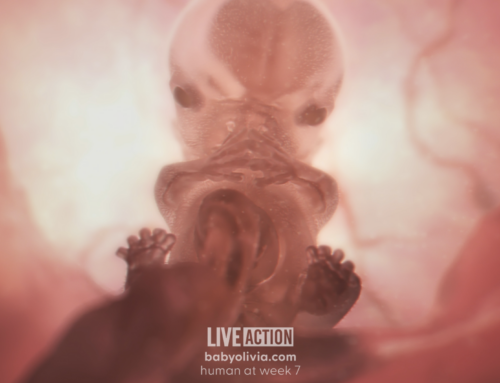We were sitting quietly in a restaurant near home, just the two of us. My husband and I had enjoyed a good meal, nice surroundings and some good conversation. Neighbors stopped by to visit at our table.
The lady had just returned from her home state where she had gone to resolve some family problems centering on an older relative who she described as a “vegetable.”
I suggested gently to her that one does not change one’s species simply by virtue of getting old, and that this had to be a contradiction in terms since one could not be both human and vegetable.
Tired old clichés
Undaunted, my friend launched into what she thought were justifications for her earlier statement … and lo and behold in just a few short minutes was off and running on her care or feeding of the Baby Does in our midst who have been making headlines since the infamous infanticide case in Bloomington, Indiana last year. The Slippery Slope In Reverse Order!
I listened, fascinated, as my table-hopping visitor slipped with ease from one end of the slope to the extreme opposite. All the tired old clichés tumbled from her mouth as she painted all the negatives she could regarding keeping alive those who were handicapped.
The death peddler’s rhetoric is no respecter of age, and thanks to increased propaganda, my friend has learned it well: the cost, the care, the lack of total awareness, etc. Obviously, she felt the handicapped newborn should be allowed to die. She said so.
Listening, one gets the mental picture of a subject with raised hand asking to be allowed to die, much as a grade-school child with raised hand asks to leave the room.
A drain on finances
I first heard the phrase “allowed to die” in 1971 during testimony on the so-called “Death with Dignity” bill in Tallahassee, Florida. At that particular time the severely retarded were the object of discussion. They were depicted as costly to the state in the cost/benefit scheme of things.
According to the bill’s chief sponsor, a physician-legislator, they could be allowed to die simply by withholding medication sorely needed by those who easily contract upper respiratory diseases.
The monies saved, he pointed out, could be put to more constructive use through a variety of options: for dialysis patients, as a case in point.
He went on to explain that, after all, dialysis patients return to society after treatment and can pull their weight, so to speak, whereas by contrast, the severely retarded in our state institutions were regarded by him as a drain on state finances.
Because twelve years ago such a premise was unthinkable, the bill was defeated. Would it be today?
Horrified by the truth
Let me tell you about the conclusion of the impromptu life/death discussion held in that otherwise peaceful restaurant last week.
My friend had finally exhausted her repertoire of fears, disguised as rationales for imposing death, stating one last time her belief that the newborn handicapped should be “allowed” to die.
I looked her straight in the eye and quietly asked her if she knew how these babies were “allowed” to die in our hospitals today. Negative.
I told her they are generally starved to death. I didn’t want to or have to describe to her the painful effects of starvation and dehydration experienced by those babies. She was already too horrified … and embarrassed.
“Allowing” a person to die simply because of a handicap had seemed to her an acceptable solution to the moment’s dilemma: causing or contributing to that person’s death definitely was not.
It’s tough to be born handicapped in today’s throwaway society which worships at the altar of youth, beauty and perfection. It will continue to be tough until people like my friend cut through the semantic nonsense imposed upon us by those who stoke the fires at that altar.
“Allowing” has its place in the English language, but let’s be honest now. The child who, raising his or her hand to be allowed to leave the classroom, will return (sooner or later). The handicapped babe who is “allowed” to die in the hospital nursery will not.
In conclusion, I quote from an article describing the Bloomington case by paediatrician Anne E. Bannon, M.D. (Human Life Review, Fall 1982).
“The final curtain of the medical drama fell during the Bloomington Baby’s last day of life. Dr. Schaffer had talked with the parents. He had talked with the hospital administrator. He had presented his medical evidence and opinion to the court. He had tried desperately to work within the system, but the system had failed him, as it was to fail Baby Doe. When Dr. Schaffer finally realized this, he (and two other paediatricians)
went with intravenous fluids in hand to the private room on an ‘adult’ floor (where the baby and his hired private-duty nurses were sent when the Nursery nurses refused to starve the baby). It was the first time in several days that Dr. Schaffer had seen the infant. It was also the last time.
“He did not start the fluids. But he described for me what he saw in that adult room on that adult floor in a modern hospital in the richest country in the world. Baby Doe’s shrunken, thin little body, with dry cyanotic skin, extremely dehydrated, breathing shallowly and irregularly, lay passively on fresh hospital linens. Blood was running from a mouth too dry to close. Death by starvation was near. Too late for fluids. Too late for surgery. Too late for justice.”




